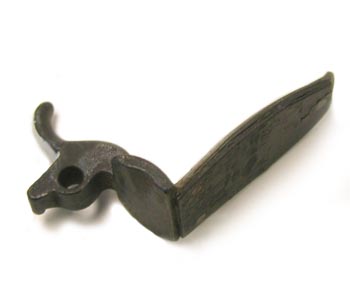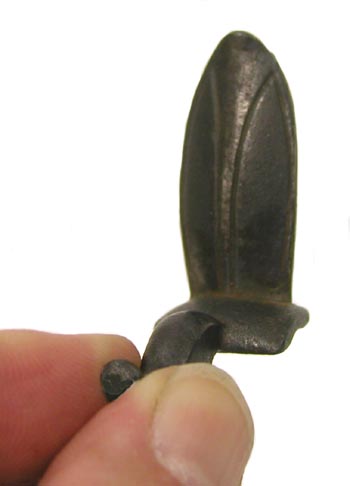Depleted Uranium Frizzen (1970s, 1980s)

In the 1970s, thin sheets of depleted uranium (DU) were sold by someone in Florida as a facing material for the frizzens used in flintlock rifles. The advertisements claimed that the uranium was so effective that it would work well even if struck with "a dull flint or any kind of rock." These claims were not far from the truth—being pyrophoric, the uranium could generate consistent and intense showers of sparks.
While DU provided a reliable method to ignite black powder, the tiny uranium fragments that became airborne when the flintlock was discharged posed a potential inhalation hazard. Gun enthusiasts were warned about this problem and told not to face their frizzens with uranium in the August 1992 issue of Muzzle Blasts magazine.
Strike marks on the DU plate can be seen in the photo above left. The photo to the right shows a simple floral design on the non-radioactive back of the frizzen.

Depleted uranium, in this case uranium metal, has less uranium-234 and uranium-235, and more uranium-238 than the uranium found in nature. By weight, natural uranium is approximately 99.3% U-238, 0.7% U-235 and 0.006% U-234. The composition of depleted uranium varies, but it is often on the order of 99.8% U-238 and 0.2% U-235.
Kindly donated by Jim Yusko.
References
- Meisenheimer and C. Laird. A Hazardous Frizzen-Facing Material. Muzzle Blasts; August 1992: 36-37.
- Keefe. Letter to Muzzle Blasts magazine dated July 30, 1992, and letter to J. Meisenheimer dated August 27 1992.
